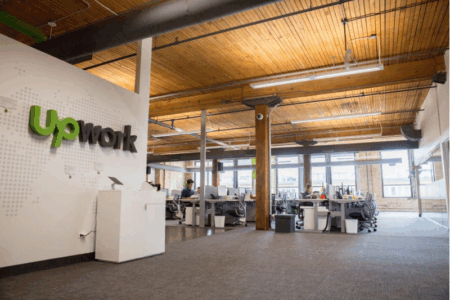The local banks have performed well in the past year.
But one bank’s share price is lagging.
DBS Group (SGX: D05) chalked up a record net profit of S$6.8 billion for its fiscal 2021 (FY2021) earnings.
Its peers United Overseas Bank Ltd (SGX: U11), or UOB, and OCBC Ltd (SGX: O39) have reported strong numbers, too.
UOB’s FY2021 saw net profit hit S$4 billion while OCBC achieved a net profit of S$4.86 billion.
The good run continued into the first quarter.
For their fiscal 2022’s first quarter (1Q2022), all three banks have reported steady year on year loan growth and stabilisation of their net interest margins (NIMs).
DBS’ share price, however, has lagged behind its peers, falling by 6% year to date.
UOB and OCBC have risen by 6% and 4.4% year to date, respectively.
Can Singapore’s largest bank’s share price catch up with the other two lenders? Let’s dig deeper to find out.
Stands to gain the most from interest hikes
Share prices naturally track the health of the business over the long term.
What we are witnessing now could be a combination of poor sentiment and weaker expectations for DBS compared with UOB and OCBC.
If we can deduce whether DBS’ business will do better in the medium term, then we can make a case for its share price to eventually play catch-up.
The first catalyst on the horizon is the US Federal Reserve’s interest rate hikes.
As inflation in the US has hit a four-decade high recently, the central bank there has also targeted aggressive rate hikes, starting with a 0.5% increase back in May.
Banks are slated to benefit from these hikes as they can expand their NIMs, thereby increasing their net interest income (NII).
On this front, DBS has communicated that it will see a S$1.9 billion uplift if the Federal Reserve increases interest rates by one percentage point.
This increase makes up more than one-fifth of its FY2021 NII.
In contrast, UOB and OCBC have announced an NII uplift of just S$600 million and S$700 million, respectively.
These numbers represent 9.4% and 12% of their FY2021 NII, respectively.
Hence, DBS stands to benefit the most from this interest rate cycle in the coming quarters.
Acquisitions are being integrated
Aside from organic growth from an increase in its loan book and higher NIMs, DBS has also been busy on the acquisition front.
In November 2020, the lender’s Indian arm bought over Lakshmi Vilas Bank to expand its presence in the world’s second-most populous nation.
Half a year later, DBS took up a 13% stake in Shenzhen Rural Commercial Bank (SZCB) in China for around S$1.08 billion to expand its reach into the Greater Bay Area.
And just this January, DBS coughed up double of what it paid for SZCB when it purchased Citigroup’s (NYSE: C) Taiwan division.
These acquisitions show the bank’s commitment to growing its presence in the region as it strengthens its competitive position in India, China, and Taiwan.
Multiple streams of revenue
In addition to the acquisitions and NII uplift, DBS has also diversified its income streams by taking on various initiatives.
These include new businesses such as the setting up of a digital exchange.
It is also working to become a technology business by collaborating with various partners to develop next-generation solutions.
One of these is Partior, an open industry platform that taps on blockchain to accelerate inter-bank movements. DBS is working with JP Morgan (NYSE: JPM) and Temasek on this initiative.
Another promising initiative is Climate Impact X, a world-class carbon exchange and marketplace that DBS set up along with Singapore Exchange Limited (SGX: S68), Standard Chartered Bank (LON: STAN) and Temasek.
Climate Impact X recently made headway by partnering with Puro.earth, a start-up owned by NASDAQ Inc (NASDAQ: NDAQ), to stimulate the supply and demand for technology-based carbon credits in Asia.
DBS’ valuation is a tad rich
Investors, however, need to note that DBS’ valuation is a tad rich compared to its peers.
The bank is trading at a price-to-book ratio of 1.47 times, much higher than the 1.18 times and 1.03 times that UOB and OCBC are trading at, respectively.
As the above initiatives kick in and DBS’ net profit improves, this valuation should naturally decline in tandem.
Get Smart: Patience and a long term view
DBS has many catalysts that can take its business to the next level.
Investors need to be patient and take a long-term view of its business prospects.
Over time, its share price should be able to catch up with its peers.
In our special FREE report, Top 9 Dividend Stocks for 2022 – and 3 Tactical Shifts to Maximise Your Profits, we’re revealing 3 special categories of stocks that are poised to deliver maximum growth in 2022 and beyond.
Our safe-harbour stocks are a set of blue-chip companies that have been able to hold their own and deliver steady dividends. Growth accelerators stocks are enterprising businesses poised to continue their growth. And finally, the pandemic surprises are the unexpected winners of the pandemic.
Download for free to find out which are our safe-harbour stocks, growth accelerators, and pandemic winners! CLICK HERE to find out now!
Follow us on Facebook and Telegram for the latest investing news and analyses!
Disclaimer: Royston Yang owns shares of DBS Group and Singapore Exchange Limited.





